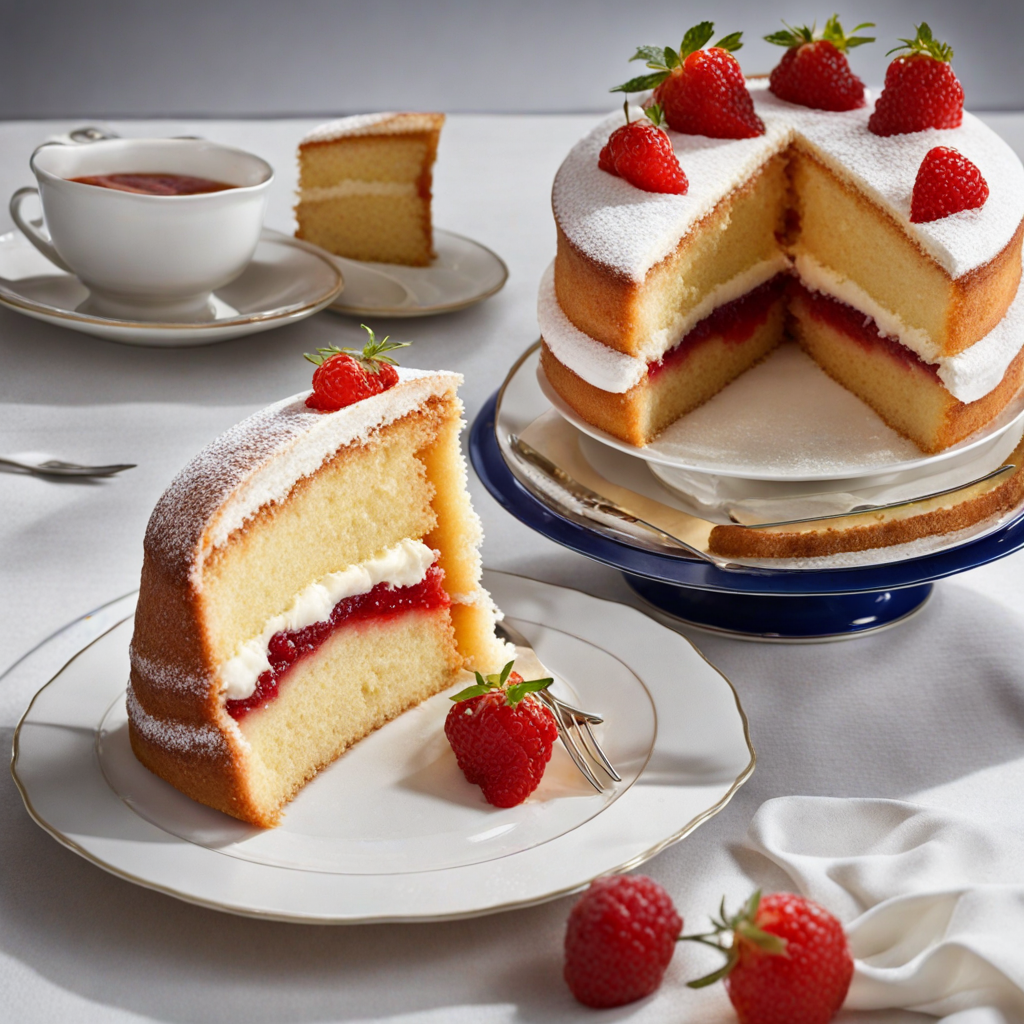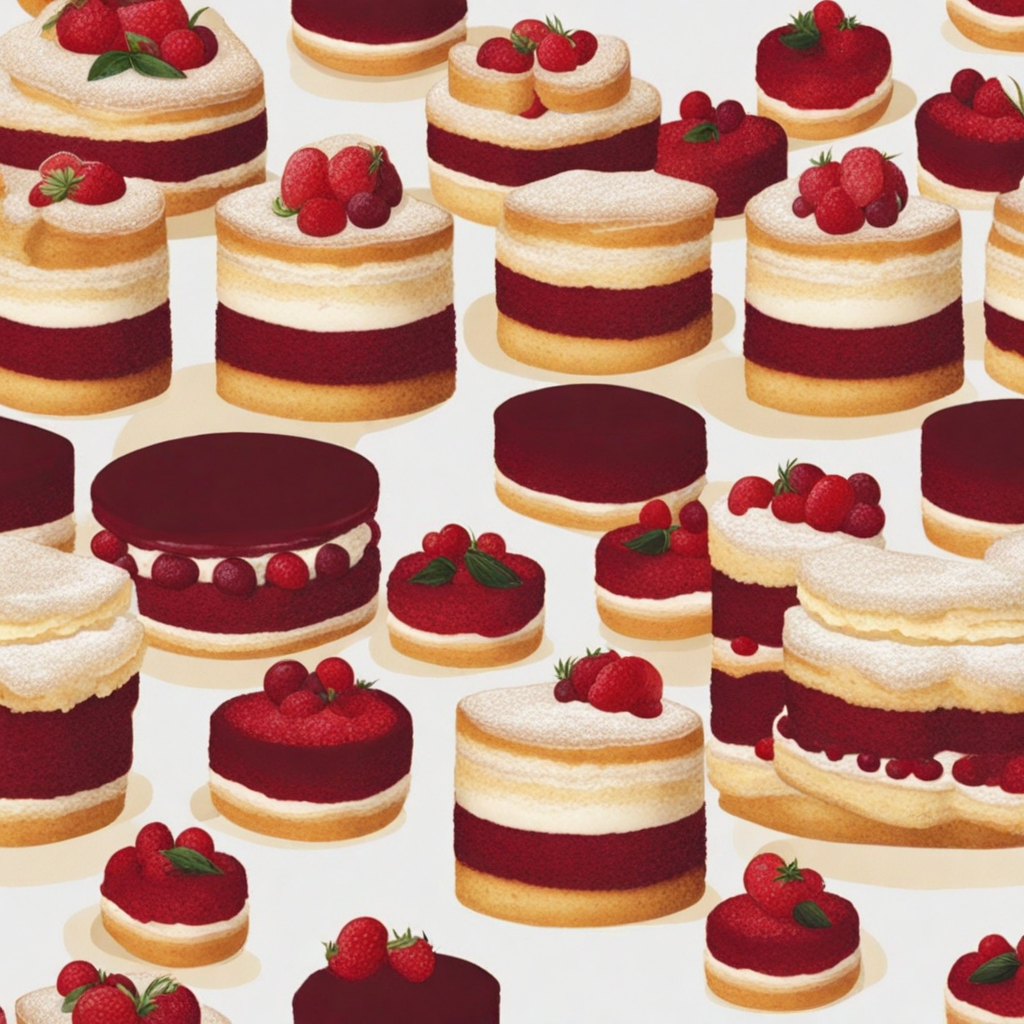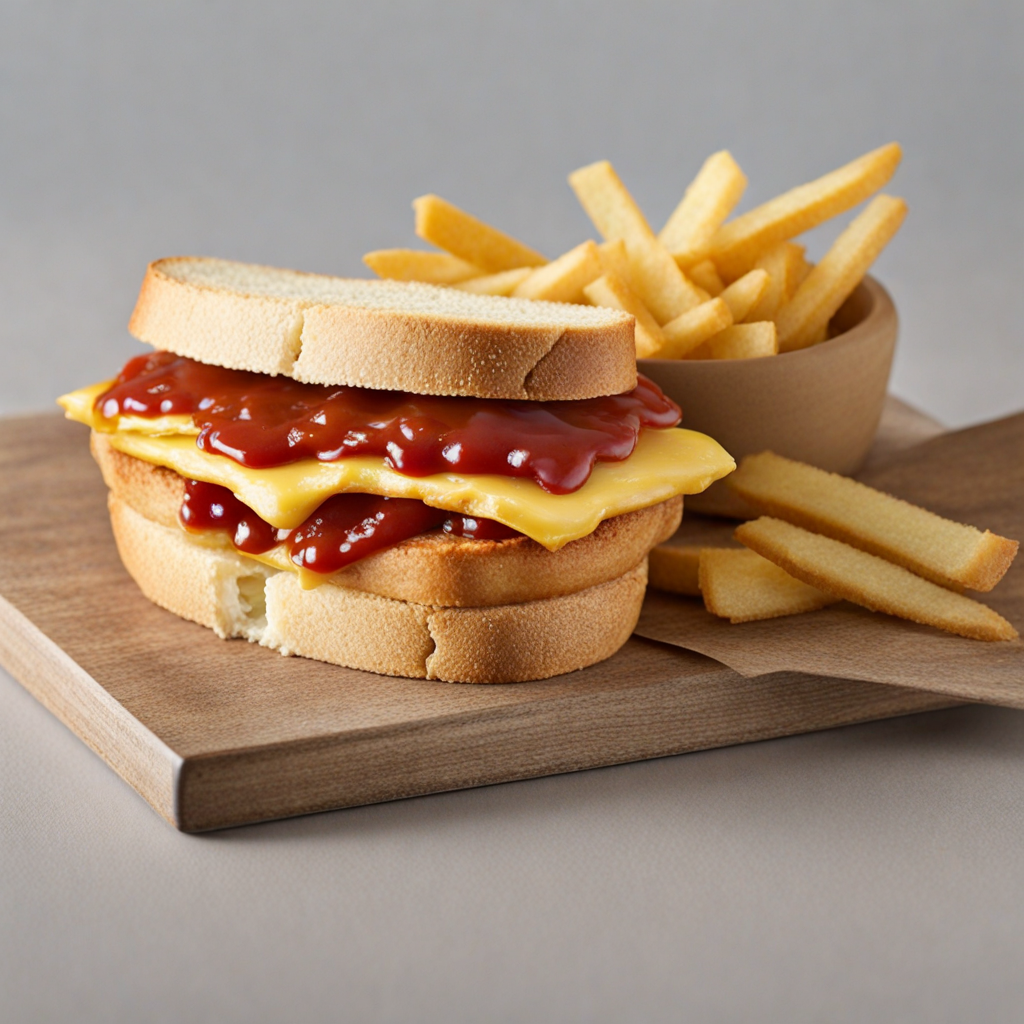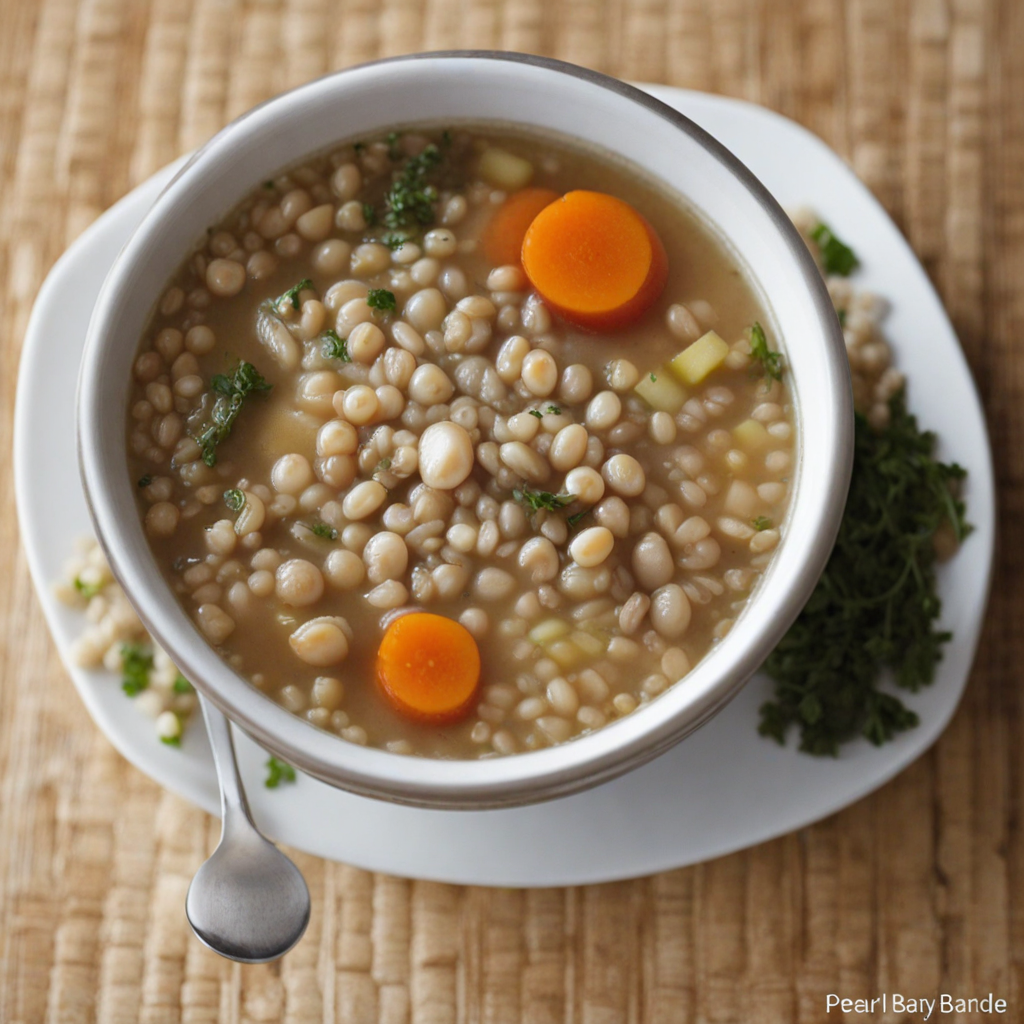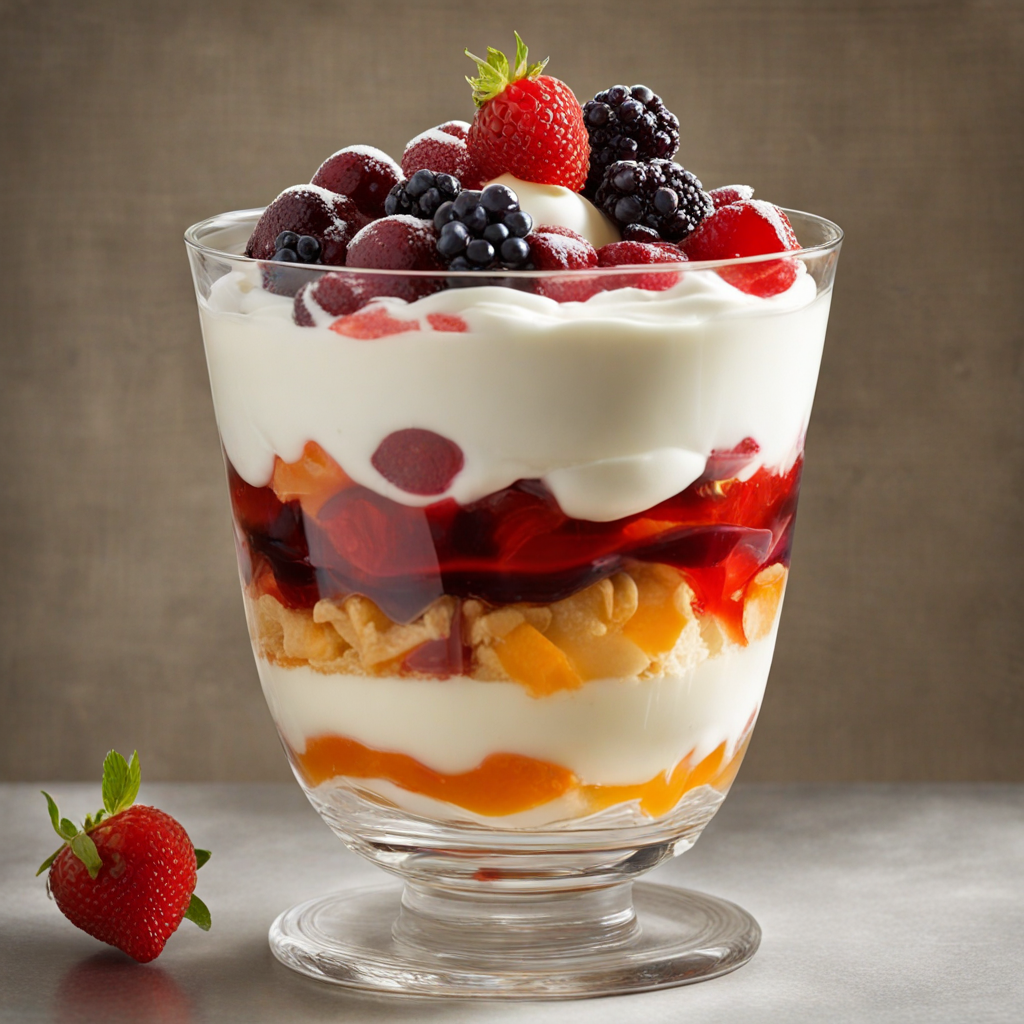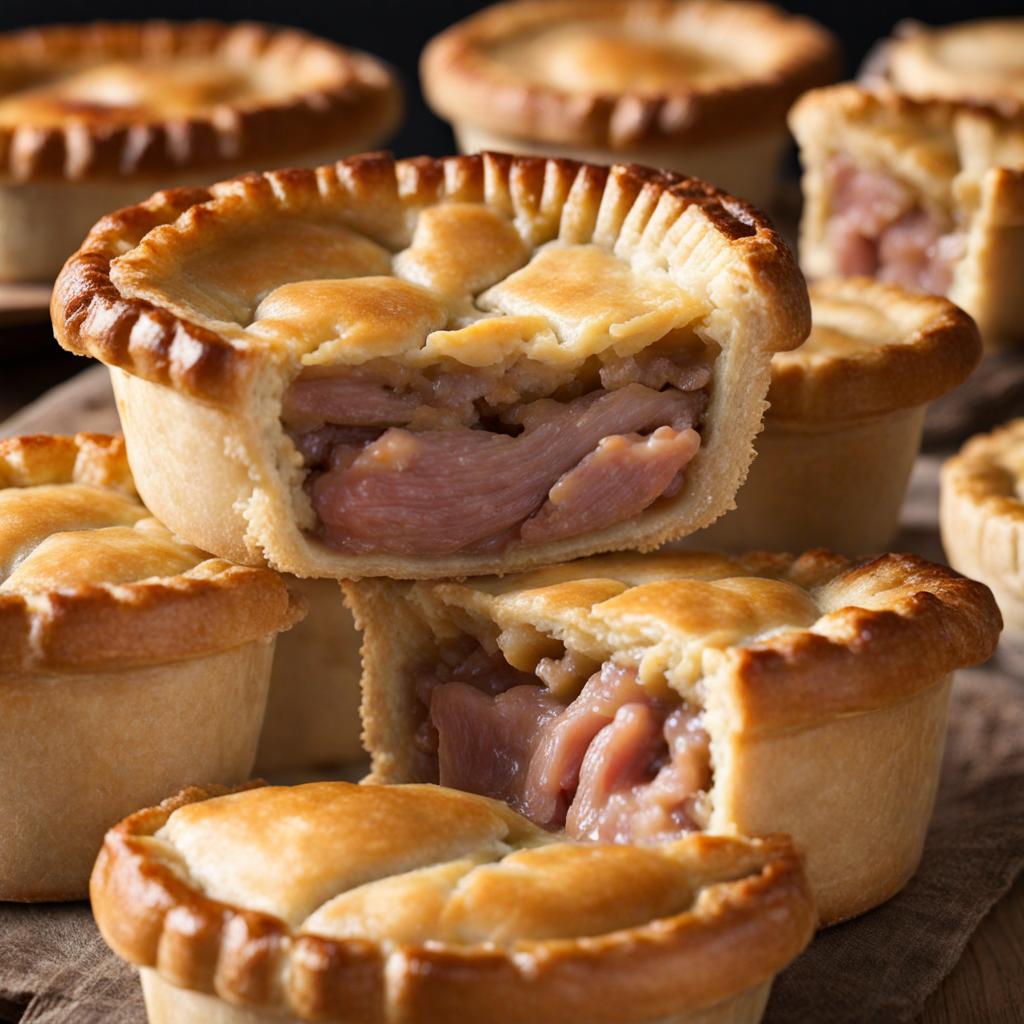Victoria Sponge Cake
Victoria Sponge Cake is a delightful and classic British dessert that embodies simplicity and elegance in its flavor profile. The cake is traditionally made using equal parts of butter, sugar, eggs, and flour, which creates a light and airy texture. The batter is generously baked into two round layers, achieving a golden-brown finish that hints at the moist and tender crumb within. The beauty of this cake lies in its balance; it is sweet without being overwhelming, allowing the subtle flavors to shine through, making it a perfect accompaniment for afternoon tea or a celebratory gathering. Once cooled, the two layers of sponge are filled with a luscious layer of raspberry or strawberry jam, providing a sweet and slightly tart contrast to the buttery sponge. Often, a generous spread of whipped cream or a dusting of powdered sugar crowns the top, adding an extra layer of indulgence. Each bite offers a delightful combination of textures—the soft cake, the smooth jam, and the airy cream work together to create a harmonious treat that feels both comforting and refined. Victoria Sponge Cake is more than just a dessert; it evokes a sense of nostalgia and warmth, often associated with British tea culture. Customarily served in slices, it is perfect for sharing, making it a staple for gatherings and celebrations. As you savor each bite, you’ll appreciate the rich history behind this cake, which was named after Queen Victoria, who was known to enjoy a slice with her afternoon tea, symbolizing a charming blend of tradition and taste that continues to delight palates today.
How It Became This Dish
The History of Victoria Sponge Cake #### Origins and Creation The Victoria Sponge Cake, often simply referred to as the Victoria Sandwich, is a quintessential British dessert that holds a special place in the hearts (and stomachs) of cake lovers across the United Kingdom. Its origins can be traced back to the 19th century, during the reign of Queen Victoria (1837-1901), after whom the cake is named. The Victorian era was marked by a burgeoning middle class, increased leisure time, and the popularization of afternoon tea, all of which contributed to the rise of elaborate cakes and pastries. The cake itself is a simple yet delightful concoction made from equal parts of butter, sugar, eggs, and flour, traditionally filled with jam (usually raspberry or strawberry) and often topped with a dusting of icing sugar. The method of creaming the butter and sugar together—an essential step in creating a light, fluffy texture—was popularized during this time, thanks to advancements in kitchen equipment and an increase in baking knowledge. Baking in the Victorian era was also influenced by the availability of new ingredients and technologies. The introduction of baking powder as a leavening agent in the 1840s revolutionized cake-making, allowing for a lighter texture that was previously difficult to achieve. This innovation coincided with the growing fascination with domesticity and the ideal of the Victorian home, where a well-baked cake was a symbol of hospitality and skill. #### Cultural Significance The Victoria Sponge Cake is more than just a treat; it embodies a cultural phenomenon. Afternoon tea, which became popular in the early 19th century, was a ritual that elevated the simple act of enjoying a cup of tea into a social event. The inclusion of cakes, particularly the Victoria Sponge, became a defining feature of this afternoon repast, symbolizing refinement and grace. The cake's dual layers—often filled with fruity jam and cream—represent not only culinary balance but also the duality of Victorian society: the combination of pleasure and propriety. The cake also holds a sentimental value in British culture, often associated with celebrations, family gatherings, and tea parties. It has become a staple at birthdays, weddings, and various social occasions. The simple yet elegant nature of the Victoria Sponge allows it to transcend the boundaries of formality, making it a beloved choice for both casual and grand events. #### Development Through the Years As the 20th century unfolded, the Victoria Sponge Cake continued to evolve. Although it remained a classic in British households, it began to be featured in various cookbooks and culinary publications, which helped to standardize the recipe. In the 1950s and 1960s, the cake gained renewed popularity, thanks in part to the rise of home economics courses in schools and the proliferation of baking shows on television. The iconic status of the Victoria Sponge was further cemented when it became a staple in competitive baking. The Great British Bake Off, which premiered in 2010, reignited interest in traditional British baking and showcased the Victoria Sponge as a key challenge for contestants. This renewed attention not only reinforced its status as a classic but also led to creative adaptations. Bakers began experimenting with flavors, fillings, and decorations, branching out into variations like chocolate Victoria Sponge or those incorporating seasonal fruits. Moreover, the rise of social media platforms allowed home bakers to share their creations, leading to a renaissance in the appreciation for traditional cakes, including the Victoria Sponge. The cake became a canvas for personal expression, with bakers posting pictures of their intricate designs, flavor combinations, and innovative presentations. #### Variations and Regional Adaptations While the classic Victoria Sponge remains a hallmark of British baking, regional variations and adaptations have emerged over time. In Scotland, for instance, a denser version known as "the Queen's Cake" is sometimes produced, which often incorporates more fruit and nuts, reflecting local tastes and traditions. Similarly, other countries have their own interpretations of the sponge cake, such as the Italian "Pan di Spagna" or the French "Génoise," both of which share similarities in basic ingredients but differ in technique and texture. Additionally, the cake's versatility has enabled it to adapt to modern tastes. Vegan and gluten-free variations have surfaced, allowing those with dietary restrictions to enjoy this timeless treat. Bakeries and home bakers alike have embraced these adaptations, ensuring that the Victoria Sponge Cake remains relevant in today's diverse culinary landscape. #### The Victoria Sponge in Contemporary Culture The Victoria Sponge Cake has not only stood the test of time but has also become a symbol of British identity. It is often featured in celebrations of British heritage, from royal occasions to national events. The cake's simplicity and elegance exemplify the British ethos of "less is more," and it continues to be a favorite among both the young and old. In addition to its culinary significance, the Victoria Sponge Cake has also made appearances in popular culture, from literature to television. Its role in the narrative of British domestic life highlights the importance of baking as a form of creativity and expression. The cake's presence in cookbooks, TV shows, and even social media challenges has made it a cultural touchstone, connecting generations of bakers and eaters. #### Conclusion The history of the Victoria Sponge Cake is a rich tapestry woven with threads of tradition, innovation, and cultural significance. From its origins in the Victorian era to its status as a beloved staple of British cuisine, this cake represents not only a delightful indulgence but also a symbol of British culture and social life. As it continues to evolve and adapt to modern tastes and dietary preferences, the Victoria Sponge remains a testament to the enduring appeal of simple pleasures in a complex world. Whether enjoyed during afternoon tea, at a birthday celebration, or as a comforting slice on a rainy afternoon, the Victoria Sponge Cake will always hold a cherished place in the hearts of those who appreciate the art of baking.
You may like
Discover local flavors from United Kingdom


